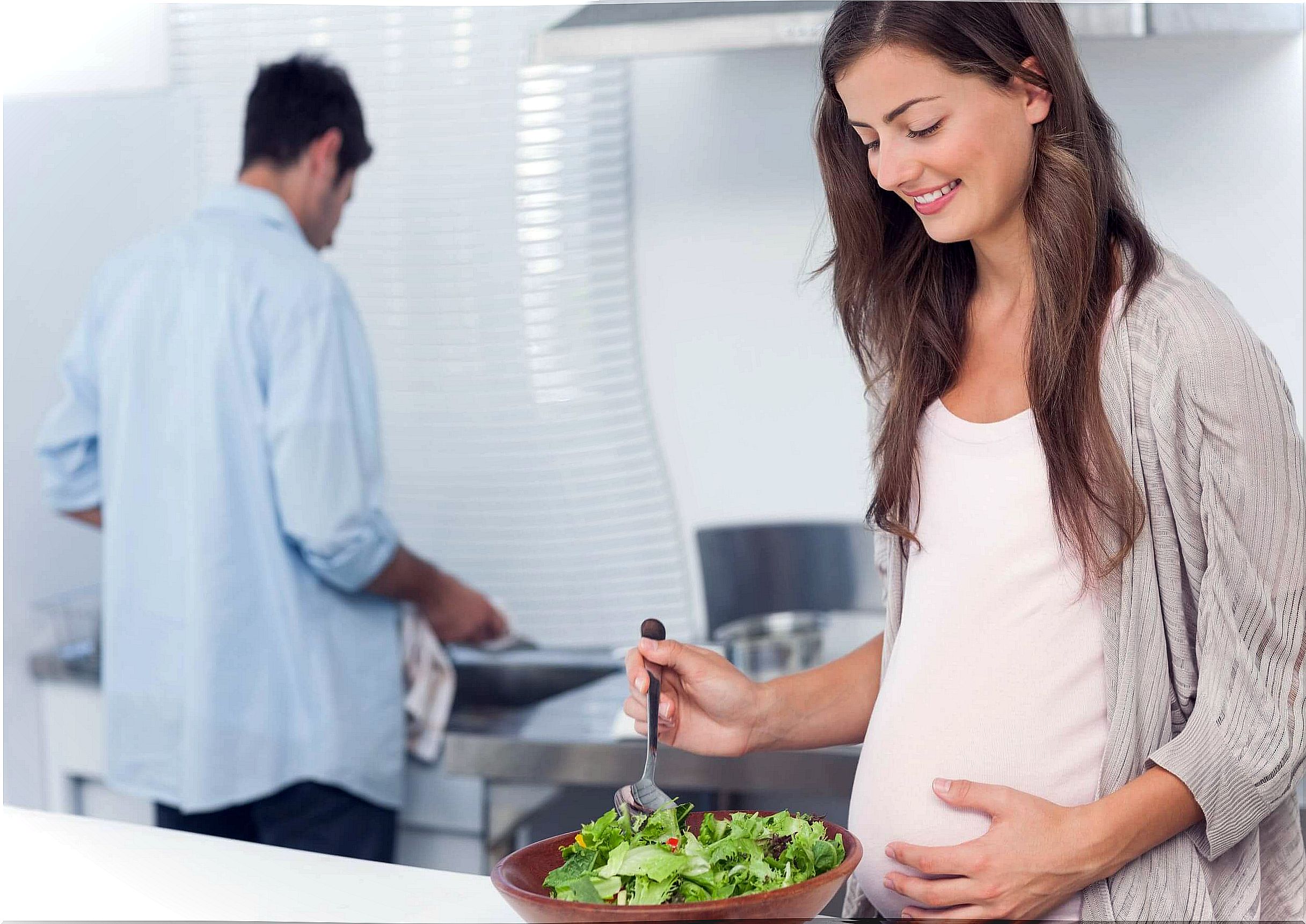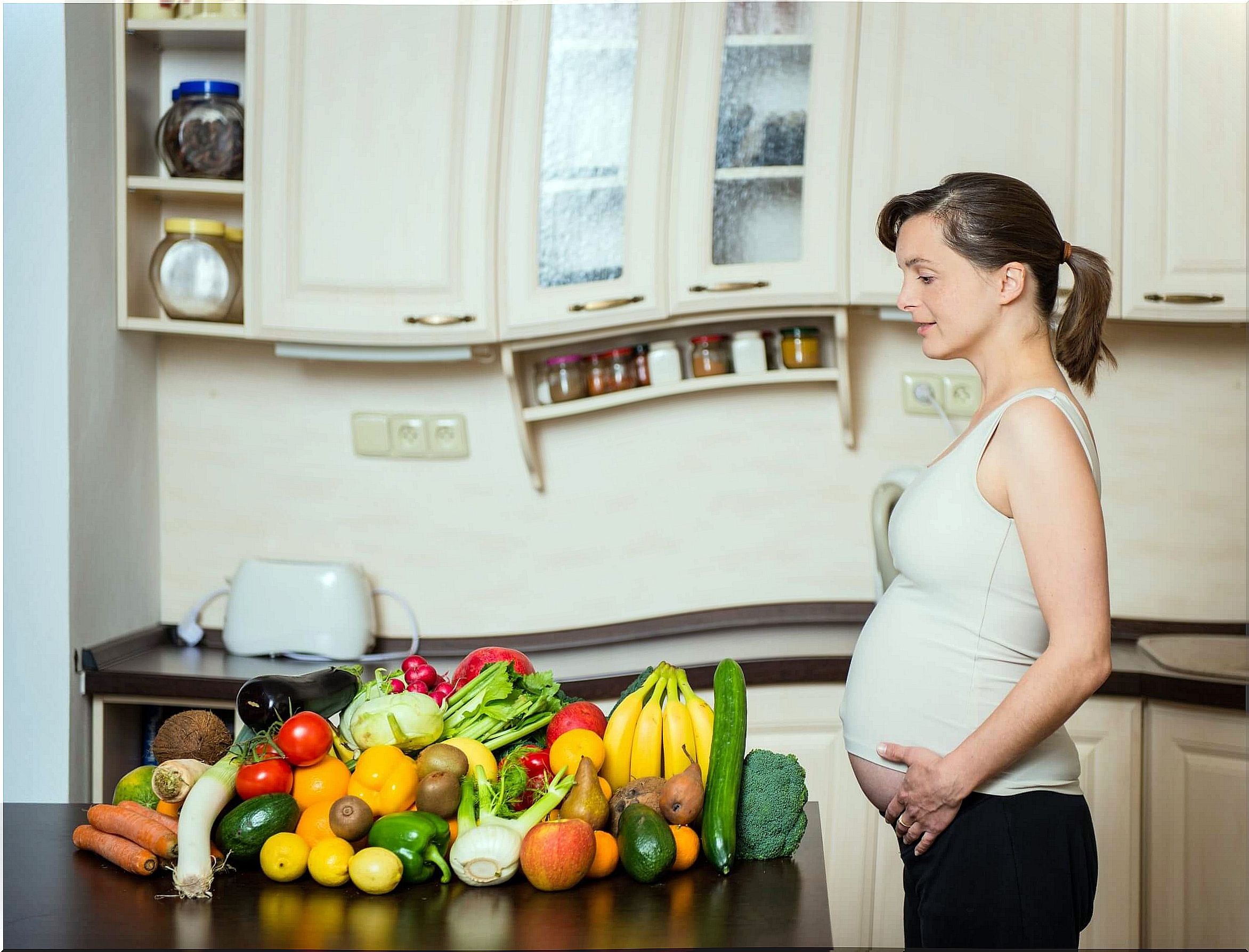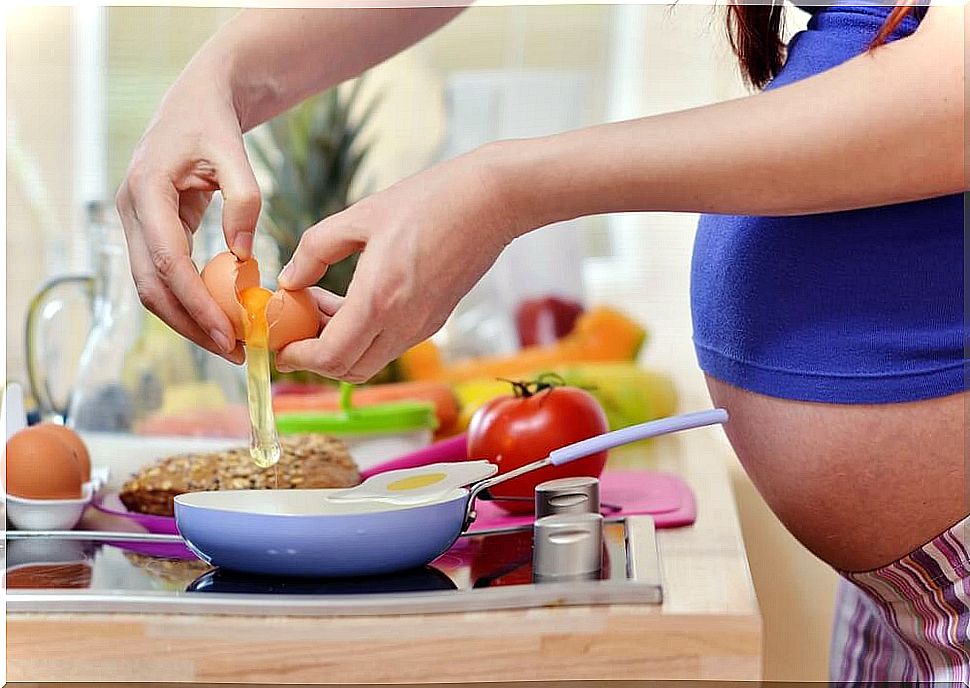Why Is It Important To Eat Green Leafy Vegetables During Pregnancy?

Did you know that nutritional needs increase during pregnancy? Therefore, given the inability to cover them through food, elements such as folic acid are supplemented. It is a vitamin involved in the development of the future baby, so it is essential to include them daily during the 9 months of gestation. For this reason, we want to explain to you why it is important to eat green leafy vegetables during pregnancy.
Folic acid belongs to the family of B vitamins and is soluble in water. In addition, it is responsible for forming the corpus luteum, characterized by its yellow color, allowing the fetus to develop. It is also involved in DNA synthesis and cell division, making it essential to meet daily needs.
Fetal malformations, the main reason to eat green leafy vegetables during pregnancy
The formation and closure of the neural tube, produced during fetal growth, are essential to avoid neurological problems and spina bifida. Respectively, they manifest through lack of coordination and thinking, as well as difficulty walking. As a consequence, there is an increased risk of miscarriage.

One of the causes is the lack of folic acid found in green leafy vegetables. In addition, the safest thing is that your doctor prescribes a supplement of 400 micrograms daily as prevention.
Anemia due to lack of folates
Although the best known is that caused by lack of iron, the deficiency of vitamin B9 and B12 are the main cause of megaloblastic anemia. It is manifested by an increase in the size of red blood cells and a decrease in their intense red color. Therefore, the transport of oxygen and blood to the tissues is reduced. It presents as gastrointestinal symptoms such as diarrhea, swelling of the tongue due to inflammation and loss of appetite.
In addition, together with vitamin B6 and B12, they prevent homocysteine from accumulating in the blood. It is a protein derived from the metabolism of methionine and whose excess has been related to an increased cardiovascular risk.
Other reasons to eat leafy greens when pregnant
Although neural tube defects and anemia are the best known negative effects of a lack of vitamin B9, there is evidence of other consequences.
We have a study carried out in China in which they ensure that supplementation and intake of more than 12 weeks reduces the risk of premature birth.
As a result of the appearance of these pathologies, many countries have chosen to fortify food. However, some still do not and this is where a relationship has been seen with the appearance of asthma in children.
For this reason, they decided to investigate one that does carry out this practice of enriching food, such as the United States. Although there was a lower incidence of asthma, it is important to note that it is a respiratory disease associated with genetic and environmental factors, which could alter the results. So more well-controlled studies are required.
Lastly, it has been associated with a rise in blood pressure or pre-eclampsia. Typically, it is multifactorial, such as family history, being over 35, obesity, and multiple pregnancy. However, increasing the intake of folic acid helps reduce its appearance after supplementing for 3 months with 4 micrograms a day.
How to incorporate green leafy vegetables on a daily basis?
Knowing the above, why not try including vegetables in your diet? Here are some ideas and tips to enjoy. Remember that these food groups are the foundation of a healthy diet.

Have you ever considered preparing a salad with leaves other than lettuce and endive? In the greengrocer you will find a great variety, such as lamb’s lettuce, arugula, spinach and endives. Add a can of fish in olive oil, tomato, carrot, celery or radishes. You can even put some slices of orange, mango or chopped strawberries and some nuts or raisins for a unique dish full of nutrients.
Or, make yourself some steamed chard or broccoli and then sauté it with a little garlic and paprika or some chopped almonds with parsley and lemon zest.
Additionally, folates are found in legumes and rolled oats, which you can eat every day. Chickpea or lentil stews with vegetables are delicious! And the flakes boiled with milk or vegetable drink with a cinnamon stick and lemon zest are a delight. Do you dare to try it?










